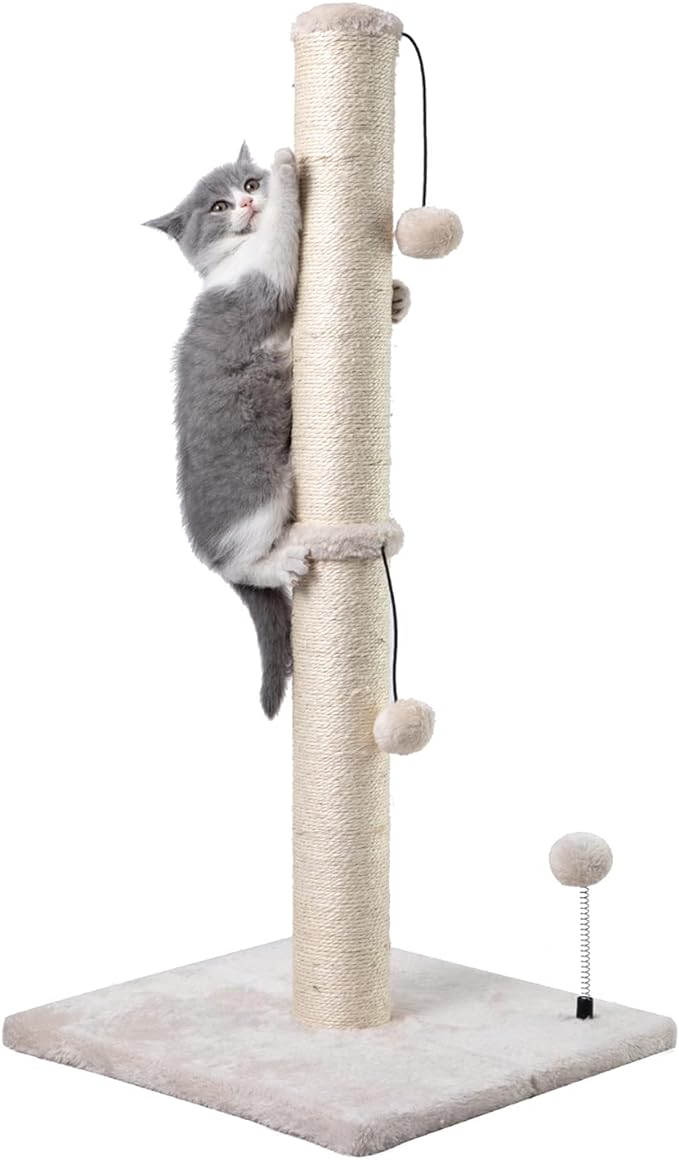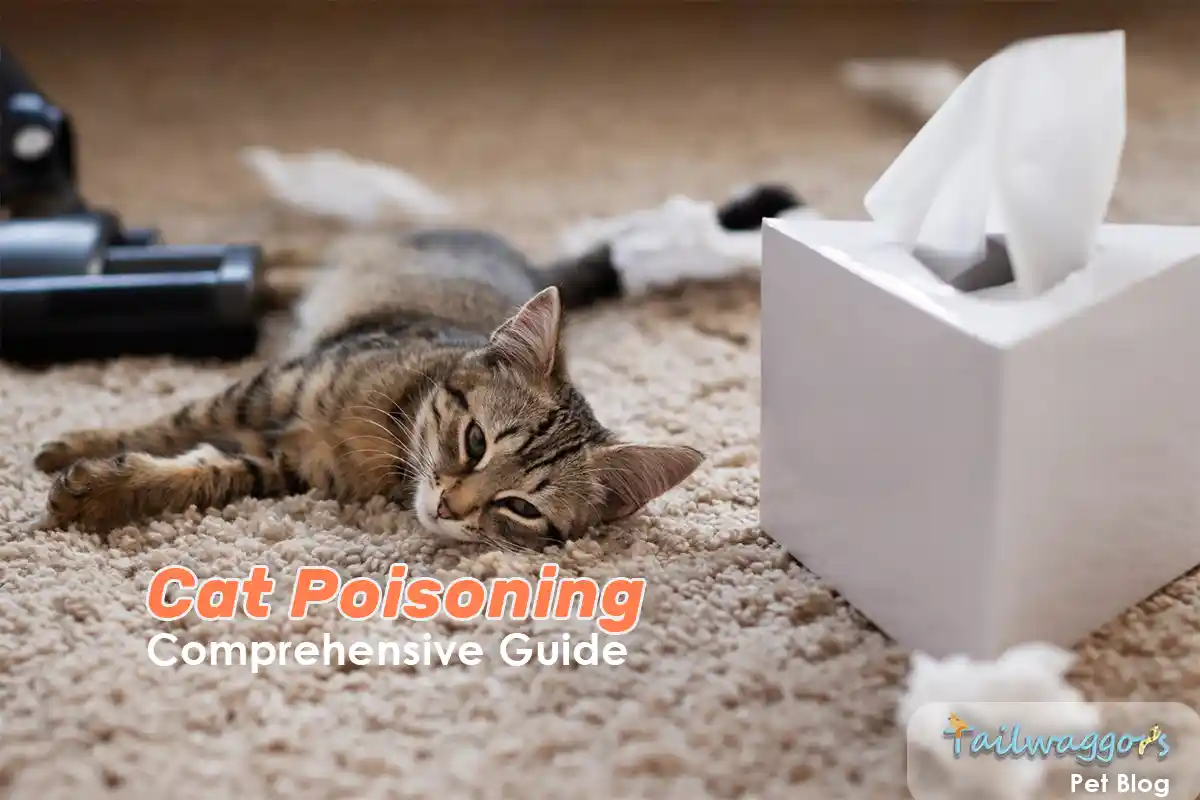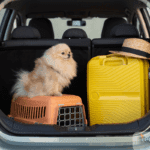Your home might be hiding dangers that could harm your curious cat. Let’s uncover them together. Poisoning is one of the most preventable risks for cats, yet it happens more often than most pet owners realize. This guide, written by Dr. Esther Knoetze, a veterinary professional, offers practical tips and insights to safeguard your feline friend. By the end of this article, you’ll know how to recognize poisoning risks, prevent them, and act swiftly in emergencies.
Understanding Cat Poisoning
What Is Cat Poisoning?
Cat poisoning is a serious medical emergency that occurs when a harmful substance enters a cat’s system through one of three primary routes:
- Ingestion (eating or drinking)
- Inhalation (breathing in toxic fumes)
- Absorption (through skin contact)
What makes cats particularly vulnerable is their unique physiology
- Small body mass (meaning even tiny amounts of toxins can be dangerous)
- Specialized liver metabolism (lacking certain enzymes to break down common substances)
- Grooming behavior (increasing exposure through fur-cleaning)
- Sensitive respiratory system (making them susceptible to airborne toxins)
Common Causes of Cat Poisoning
Natural Curiosity
- Playful investigation of new items
- Attraction to moving objects
- Tendency to chase poisonous insects
- Interest in contaminated puddles & toilet bowls
Owner Knowledge Gaps
- Misconceptions about “safe” human foods
- Lack of toxic plant awareness
- Incorrect storage of chemicals
- Underestimating cats’ abilities to access areas
Environmental Factors
- Cross-contamination in shared spaces
- Residual chemicals on floors & surfaces
- Secondary poisoning from affected prey
- Seasonal risks (plants, antifreeze, fertilizers)
Modern Living Challenges
- Increased use of essential oils & diffusers
- Growing indoor plant trends
- Complex cleaning products
- Multi-person household risks
Toxic Foods Guide
What You Need to Know to Keep Your Cat Safe
Many common kitchen ingredients can be lethal to cats.
Learn which foods to keep away from your feline friend.
⚠️ HIGH-RISK KITCHEN STAPLES
Chocolate & Caffeine
- Severity: Extremely dangerous
- Contains: Theobromine, caffeine
- Worse with dark chocolate
- 1 oz can be lethal
Allium Family
- Onions, Garlic, Chives, Leeks
- Destroys red blood cells
- Effects appear after days
- Hidden in many foods
⚠️ EMERGENCY RISK
These common ingredients can be fatal – seek immediate veterinary care if ingested
PREVENTION TIPS
Unexpected Fruit Dangers
- Grapes & Raisins
- Toxicity: Can cause acute kidney failure
- Risk factor: Individual sensitivity varies
- Important: No safe amount established
- Includes: All varieties, including those in baked goods
Everyday Kitchen Risks
Dairy Products
- Issue: Most cats are lactose intolerant
- Risk: Digestive upset, dehydration
- Common sources: Milk, cheese, yogurt
Protein-Rich Foods
- Raw meat and fish: Risk of bacterial contamination
- Canned tuna: Mercury concerns with regular feeding
- Bones: Choking and intestinal perforation hazards

Kitchen Safety Protocol
Creating a Cat-Safe Kitchen Environment
Your kitchen can be a dangerous place for curious cats.
Follow these essential safety protocols to protect your feline friend.
🔐 STORAGE SOLUTIONS
- Install child-proof latches on all cabinets
- Use covered trash bins with secure lids
- Keep food in sealed containers
- Store cleaning supplies separately
📋 FAMILY EDUCATION
- Create and maintain a safety checklist
- Post toxic food lists on refrigerator
- Set clear family feeding rules
- Train visitors about cat safety
Your kitchen isn’t just the heart of your home—it’s also a place of curiosity for your feline friend. While we can’t (and shouldn’t) completely keep our cats out of the kitchen, we can make it a safer space for them.
Remember that cats are naturally curious and excellent climbers, so thinking “high and low” is essential. Just like childproofing, “cat-proofing” your kitchen is an ongoing process, not a one-time task.
Make it part of your regular routine to check cabinet latches, ensure cleaning supplies are sealed, and keep counters clear of tempting items. By taking these small, consistent steps, you’re creating a space where both humans and cats can coexist safely. After all, the best kitchen memories are made when everyone in the family—including our four-legged members—is protected.
Emergency Preparedness
- Keep poison control numbers visible
- Document your cat’s weight and medical history
- Maintain a pet emergency kit
Red Flags to Watch For
Sudden vomiting or diarrhea
Lethargy after possible food exposure
Changes in urination patterns
Unusual drooling or mouth pawing
Safe Alternatives
- Commercial cat treats
- Small pieces of cooked, plain chicken
- Tiny bits of plain, cooked fish
- Special occasion cat-specific treats
Remember: A cat’s digestive system is uniquely designed for their specific dietary needs. What’s safe for humans or even dogs can be lethal for cats. When in doubt, stick to veterinarian-approved cat food and treats.

Dangerous Plants for Cats: Common U.S. Household Threats
Many popular houseplants in American homes can pose serious risks to cats. While you can find our complete guide to toxic plants here, these are the most critical plants to watch for in U.S. households:
High-Risk Indoor Plants
Dangerous Houseplants
Protect Your Cat from These Common Indoor Plants
Did you know? Over 25% of cats will encounter a toxic plant in their lifetime.
Learn which common houseplants pose the biggest risks to your feline friend.
⚠️ EXTREMELY DANGEROUS
Lilies (All Types)
- Toxicity Level: SEVERE/FATAL
- Parts to Avoid: ALL parts + pollen
- Key Risk: 1-2 leaves = kidney failure
- Common Types: Easter, Tiger, Day, Asian, Stargazer
Monstera Deliciosa
- Popular in modern decor
- Contains calcium oxalates
- Immediate mouth burning
- Risk of breathing difficulty
Remove these plants immediately and contact your veterinarian
if your cat has had any contact with them
⚠️ MODERATE RISK
Pothos (Devil’s Ivy)
- Found in 1 in 3 U.S. homes
- Causes oral irritation, drooling
- Common in offices, baskets
- ALL varieties are toxic
Snake Plants
- Marketed as “unkillable”
- Contains toxic saponins
- Causes nausea, vomiting
- Popular in minimal decor
Keep these plants out of reach and monitor your cat
for any signs of contact or ingestion
Outdoor Hazards in U.S. Gardens
Spring/Summer Risks
Protect Your Cat from These Seasonal Outdoor Dangers
Warm weather brings unique risks for outdoor and indoor-outdoor cats.
Be especially vigilant for these common landscaping plants.
⚠️ EXTREMELY DANGEROUS
Sago Palms
- Common in Southern states
- ALL parts toxic, especially seeds
- Mortality rate: Up to 50% if ingested
- Popular in landscaping
Oleander
- Common in warm climate states
- Contains cardiac glycosides
- One leaf can be fatal
- Found in community areas
These plants are commonly found in warm-weather landscapes
Keep cats indoors or supervise outdoor access in areas with these plants
Safe Alternatives for Your Home
Proven Cat-Safe Options
Proven Cat-Safe Options
Spider Plant
- Easy to grow
- Actually attracts cats safely
- Perfect for hanging baskets
- Excellent air-purifier
Boston Fern
- Excellent air purifiers
- Moisture-loving
- Safe if chewed
- Lush fronds for home décor
Chinese Money Plant

- Trending in home decor
- Compact size
- Easy propagation
- Stylish and safe for cats
© Tailwaggors – Protecting Your Feline Friends
Veterinary Advisory: “When in doubt about any plant’s safety, consult our comprehensive toxic plants guide or contact your veterinarian before bringing it into your home. The trend toward indoor jungles makes plant awareness more critical than ever for cat owners.”

Household Chemicals and Cat Safety: A Critical Guide
High-Risk Chemical Categories
Chemical Hazards
Common Household Products That Can Harm Your Cat
Even everyday cleaning products can be lethal to cats.
Learn which common chemicals pose the biggest threats.
Surface Cleaners
- Phenol-based products
- Concentrated bleach
- Ammonia cleaners
- Toilet bowl tablets
- Essential oil cleaners
- Steam mop solutions
Laundry Items
- Liquid pods (attractive to cats)
- Dryer sheets (toxic if chewed)
- Fabric softener residue
⚠️ HIGH RISK: SECURE IMMEDIATELY
Store all cleaning products in locked cabinets
Clean surfaces thoroughly and ensure proper ventilation
Antifreeze/Coolants
- 1 teaspoon can be lethal
- Sweet taste attracts cats
- Watch for driveway spills
- Use pet-safe alternatives
Indoor Pest Control
- Rodent baits (secondary poisoning)
- Ant traps and baits
- Roach powders
- Bug sprays
Outdoor Treatments
- Lawn fertilizers
- Weed killers
- Slug/snail bait
- Mosquito treatments
⚠️ CRITICAL SAFETY ALERT
Clean all spills immediately and store products securely
Consider pet-safe alternatives when available
Your home’s everyday products can pose serious risks to your curious cat, but don’t worry – awareness is your first line of defense. The red-coded cleaning section highlights the most immediate threats in your home, particularly phenol cleaners, bleach, and ammonia products that cats might encounter during their daily exploration.
The orange-coded garage and garden section reveals surprising dangers like antifreeze (which attracts cats with its sweet taste) and common pest controls that could cause secondary poisoning. Think of this guide as your ‘safety map’ – it shows both the obvious hazards (like cleaning products under the sink) and the hidden ones (like dryer sheets or toilet bowl tablets) that might not immediately come to mind.
The key takeaway? Store products securely, clean spills immediately, and keep the emergency poison control number (888-426-4435) in your contacts. Remember, your cat’s safety often comes down to simple preventive steps: locked cabinets, proper storage, and choosing pet-safe alternatives when possible.
Safe Storage Solutions
Kitchen & Garage Safety
Essential Storage Protocols for Cat-Safe Homes
Proper storage is your first line of defense against accidents.
Follow these protocols to create safe storage zones in your home.
🔒 Kitchen Safety Zones
Under-Sink Organization
- Install child-proof locks
- Use sealed containers
- Label everything clearly
- Post emergency numbers
High Cabinet Protocol
- Store items above 6 feet
- Install latching doors
- Group similar products
- Keep inventory updated
⚠️ Garage/Utility Safety
Dedicated Chemical Cabinet
- Install ventilation system
- Use double-lock mechanism
- Add spill containment trays
- Check inventory monthly
Pet-Safe Alternatives
Natural Cleaning Guide
All-Purpose Cleaner Recipe
Basic Recipe
- 1 part white vinegar
- 1 part water
- Fresh lemon rind for scent
Natural Deodorizers
- Baking soda for carpets
- Enzyme cleaners for pet accidents
- Chemical-free steam cleaning
Safe Handling Practices
During Cleaning
- Ventilate spaces thoroughly
- Keep cats in separate room
- Allow surfaces to dry completely
- Rinse floors twice
After Chemical Use
- Wipe paw-level surfaces
- Dispose of rags properly
- Clean cat beds if exposed
- Monitor cat behavior
Even natural cleaners require careful handling. Always keep all cleaning products out of reach of pets.
Creating a cat-safe home doesn’t mean compromising on cleanliness. This guide shows you how to maintain a fresh, clean home using natural alternatives that are gentler on your feline friends. The simple vinegar and water solution, enhanced with lemon rind, offers an effective all-purpose cleaner without harsh chemicals.
For those inevitable pet odors, baking soda and enzyme cleaners provide safe alternatives to chemical deodorizers. The key to success lies in the handling practices – while these cleaners are natural, it’s still important to keep your cat away during cleaning sessions, ensure proper ventilation, and give surfaces time to dry completely.
Pay special attention to paw-level areas and items your cat frequently contacts, like their beds. Remember, even natural cleaning products should be stored safely away from curious cats. This approach gives you the best of both worlds: a clean home and a safe environment for your feline family member.
Emergency Protocol
If Exposure Occurs
- Remove cat from area immediately
- Check for chemical residue on fur
- Document product details
- Call emergency vet services
Monthly Safety Prevention Checklist
Veterinary Advisory: The most dangerous chemicals are often the ones we use daily without thinking. Create barriers between your cat and these products, and always have an emergency plan ready. When in doubt, choose pet-safe alternatives or consult your veterinarian about specific product safety.
Remember: Cat paws are especially sensitive to chemical residues, and cats groom themselves frequently. What seems like a small exposure can quickly become dangerous through repeated grooming.

Recognizing Cat Poisoning: A Critical Guide
Early Warning Signs of Poisoning
Digestive System Red Flags
Immediate Signs (0-2 hours)
- Excessive drooling or foaming
- Pawing at mouth
- Difficulty swallowing
- Vomiting (may be colored/contain evidence)
Delayed Signs (2-24 hours)
- Loss of appetite
- Diarrhea
- Abdominal pain/swelling
- Blood in stool
Behavioral Changes
Personality Shifts
- Unusual aggression
- Excessive vocalization
- Withdrawal from family
- Hiding in dark places
Activity Level Changes
- Sudden lethargy
- Uncoordinated movement
- Restlessness/pacing
- Collapse
Critical Neurological Signs
- Seizures (focal or general)
- Muscle tremors
- Head pressing
- Blindness
- Disorientation
Cardiovascular Signs
- Gum color changes (blue, pale, or bright red)
- Irregular heartbeat
- Weak pulse
- Collapse
Respiratory Signs
- Rapid breathing (>40 breaths/minute)
- Labored breathing
- Wheezing/coughing
- Blue tongue
Emergency can strike at any time. Learn the 5 critical components of a cat emergency plan so you can keep your kitty safe and feel prepared.

Emergency Response Protocol
Emergency Response Protocol
⚡ First Response (0-5 min)
- Remove cat from danger
- Check breathing/consciousness
- Collect evidence of toxin
- Document start time of symptoms
📞 Emergency Contacts (5-10 min)
- ASPCA Poison Control: 888-426-4435
- Pet Poison Helpline: 855-764-7661
- Your Vet: [Add Number]
- Emergency Vet: [Add Number]
📋 Information to Gather
- Cat’s weight and age
- Timing of exposure
- Amount of substance
- Photos of packaging/plant
- Video of symptoms if possible
Every cat owner should know the warning signs of poisoning and how to respond – it could save your pet’s life. The early red flags often start in the digestive system, with signs like excessive drooling or vomiting appearing within the first two hours, followed by delayed symptoms like loss of appetite or diarrhea.
Watch for behavioral changes too – your normally friendly cat might become unusually aggressive or withdraw completely. The most critical signs that demand immediate veterinary care include seizures, breathing difficulties (especially if breathing more than 40 times per minute), gum color changes, or collapse. If you suspect poisoning, act fast with the 5-minute protocol: remove your cat from danger, check their breathing, collect evidence of the toxin, and document when symptoms started.
Keep emergency numbers readily available – especially the ASPCA Poison Control (888-426-4435) and Pet Poison Helpline (855-764-7661).
Remember to gather key details like your cat’s weight, timing of exposure, and if possible, photos of any substances involved. Time is critical in poisoning cases, so having this knowledge beforehand can make all the difference in an emergency.
Veterinary Treatment Guide
Treatment Protocol
🔍 Initial Assessment
Triage Procedures
- Vital signs check
- Physical examination
- Blood pressure monitoring
- Temperature reading
Diagnostic Tests
- Blood work panel
- Urinalysis
- Toxin screening
- Imaging if needed
💉 Immediate Interventions
Decontamination
- Controlled emesis (if appropriate)
- Activated charcoal administration
- External washing if needed
- Eye flushing if exposed
Supportive Care
- IV fluid therapy
- Oxygen support
- Temperature regulation
- Pain management
🏥 Extended Treatment
Organ Support
- Kidney protection protocols
- Liver support therapy
- Cardiac monitoring
- Neurological support
⏳ Recovery Timeline
24-48 Hours
- Critical monitoring period
- Frequent vital checks
- Feeding tube if needed
48-72 Hours
- Assessment of organ function
- Adjustment of treatment
- Planning for home care
When your cat needs treatment for poisoning, veterinarians follow a comprehensive timeline to ensure the best possible outcome. The first crucial steps involve quick assessment of vital signs and diagnostic tests to understand the severity of poisoning. Immediate interventions might include decontamination procedures like controlled vomiting or activated charcoal, depending on the toxin.
The first 24-72 hours are the most critical – your cat will receive supportive care like IV fluids, oxygen if needed, and careful monitoring of organ function. Recovery is usually monitored in stages, with the first 48 hours being the most intensive.
Remember, every poisoning case is different, and treatment plans are tailored to your cat’s specific situation. The key to success is quick action and following the full treatment protocol, even if your cat starts showing improvement. Don’t stop treatment early – following through with the complete recovery timeline gives your cat the best chance at full recovery.

Prevention Strategy
Home Safety Protocol
🔒 Physical Barriers
- Child-proof locks
- High storage solutions
- Secured trash bins
- Plant barriers
🐱 Environmental Enrichment
- Cat grass gardens
- Multiple scratching stations
- Interactive toys
- Safe climbing spaces
📋 Monthly Safety Checklist
Creating a safe home environment for your cat is all about smart prevention through two key approaches: physical barriers and enrichment. Physical safety starts with childproof locks on cabinets, keeping harmful items stored high up, and using secured trash bins to prevent curious paws from accessing dangerous materials.
But safety isn’t just about restrictions – it’s also about providing positive alternatives through environmental enrichment. Give your cat safe options to explore by setting up cat grass gardens (which satisfy their natural grazing instincts), multiple scratching stations, and designated climbing spaces. This balanced approach of protection and enrichment helps prevent poisoning by redirecting your cat’s natural curiosity to safe activities.
The monthly safety checklist is your best tool for maintaining this safe environment. Make it a habit to check all storage locks, update emergency contact numbers, inspect any houseplants, review cleaning supplies, and check outdoor spaces regularly. Remember, prevention is always easier than dealing with an emergency – a few minutes of monthly maintenance can save hours of worry and potential veterinary visits.
Key take-home message: Don’t just focus on keeping dangerous items away from your cat – create an enriching environment that naturally guides them toward safe behaviors while maintaining consistent safety checks.

Enriching your cat’s enviroment: A few ideas
Transform your home into a feline paradise while keeping safety in mind! Start with a cat grass garden – these easy-to-grow grasses satisfy your cat’s natural grazing instincts and provide a safe alternative to potentially toxic houseplants. Create vertical territory with sturdy cat trees and wall-mounted perches, giving your curious climber safe vantage points to survey their domain.
Set up multiple scratching stations using different textures – try sisal rope posts, cardboard scratchers, and natural wood surfaces to keep your cat engaged. Interactive toys like puzzle feeders and treat-dispensing balls provide mental stimulation while keeping them away from household hazards. If you’re just starting out, check out our Vet-Approved New Cat Supply Checklist for essential items and tips to ensure your cat has everything they need. Consider adding a window perch with a bird feeder view for entertainment, or set up a cozy cave space for quiet retreats.
Remember, a well-enriched cat is less likely to seek out potentially dangerous alternatives – it’s about creating an environment so engaging that household hazards become less interesting by comparison.
Recommended Products for a Cat-Safe Home
To create a safer environment for your cat, here are some highly-rated products that can help minimize poisoning risks and promote their overall well-being:
 PetSafe Drinkwell 1/2 Gallon (64 Ounce) Small Pet Fountain – Small Dog and Cat Water Fountain – Dishwasher Safe Filtered Water Dispenser with Flow Control – Easy to Clean – Filters Included
PetSafe Drinkwell 1/2 Gallon (64 Ounce) Small Pet Fountain – Small Dog and Cat Water Fountain – Dishwasher Safe Filtered Water Dispenser with Flow Control – Easy to Clean – Filters Included Catit Airsift Jumbo Hooded Cat Litter Pan, Warm Gray/White – Privacy and Easy Access for Cleaning – Ideal for Larger Cat Breeds or Multiple Cat Households
Catit Airsift Jumbo Hooded Cat Litter Pan, Warm Gray/White – Privacy and Easy Access for Cleaning – Ideal for Larger Cat Breeds or Multiple Cat Households MEOWFIA Cat Cave – Premium Felt Cat Bed for Indoor Cats, Handmade 100% Merino Wool (Dark Shades) (Medium, Emerald)
MEOWFIA Cat Cave – Premium Felt Cat Bed for Indoor Cats, Handmade 100% Merino Wool (Dark Shades) (Medium, Emerald) PetSafe Come with Me Kitty Harness and Bungee Leash, Harness for Cats, Medium, Electric Lime/Green
PetSafe Come with Me Kitty Harness and Bungee Leash, Harness for Cats, Medium, Electric Lime/Green SmartyKat (20 Count) Skitter Critters Value Pack Catnip Cat Toys – Gray/Cream, 20 Count
SmartyKat (20 Count) Skitter Critters Value Pack Catnip Cat Toys – Gray/Cream, 20 Count The Cat Ladies Organic Cat Grass for Indoor Cats – Growing Kit with Organic Seed Mix, Soil and White Cat Planter. Natural Hairball Control and Digestion Remedy, Cat Gifts
The Cat Ladies Organic Cat Grass for Indoor Cats – Growing Kit with Organic Seed Mix, Soil and White Cat Planter. Natural Hairball Control and Digestion Remedy, Cat Gifts Yaheetech 54in Cat Tree Tower Condo Furniture Scratch Post for Kittens Pet House Play
Yaheetech 54in Cat Tree Tower Condo Furniture Scratch Post for Kittens Pet House Play MECOOL 34” Tall Cat Scratching Post Premium Basics Kitten Scratcher Sisal Scratch Posts Trees with Hanging Ball for Indoor Cats (34 inches for Adult Cats, Beige)
MECOOL 34” Tall Cat Scratching Post Premium Basics Kitten Scratcher Sisal Scratch Posts Trees with Hanging Ball for Indoor Cats (34 inches for Adult Cats, Beige) Catit Senses 2.0 Food Tree – Sturdy Tree-Shaped Slow Feeder
Catit Senses 2.0 Food Tree – Sturdy Tree-Shaped Slow FeederFrequently Asked Questions About Cat Poisoning Prevention
Emergency Situations FAQ
Quick answers to critical pet poisoning questions
No – contact your veterinarian immediately. Here’s why:
- Many toxins have delayed effects (12-72 hours)
- Early treatment dramatically improves outcomes
- Some plants can cause organ failure with minimal exposure
- The “wait and see” approach often leads to worse outcomes
Action Steps:
- Take photos of the plant
- Save any vomited material
- Note the time of ingestion
- Contact emergency services
Take immediate action:
- Wipe mouth with damp cloth
- Check product ingredients
- Call poison control
- Do NOT induce vomiting without professional guidance
Pain Relievers
- Acetaminophen (fatal in small doses)
- Ibuprofen
- Aspirin
Other Medications
- Antidepressants
- Diet pills
- Cold medicines
- ADHD medications
- Hydrogen peroxide (only use if directed by vet)
- Digital thermometer
- Rubber gloves
- Animal poison control numbers
- Pet first aid guide
- Your cat’s medical history
- Recent photo of your cat
Commercial Products
- Seventh Generation Free & Clear
- Mrs. Meyer’s Clean Day (unscented)
- Biological enzyme cleaners
DIY Solution
Veterinary Advisory:
“The most successful poisoning outcomes occur when owners act quickly and have emergency information readily available. Create a digital and physical copy of your emergency contact card.”
Remember: When in doubt, always err on the side of caution and contact your veterinarian. It’s better to have an unnecessary vet visit than a tragic delay in treatment.
🏠 Is Your Home Safe for Your Cat?
1. Where do you store your cleaning supplies?
2. Do you have any of these toxic plants?
✓ Top 10 Poison Prevention Tips
U.S. Helpline Resources
- ASPCA Animal Poison Control Center
- 24/7 poison control hotline: (888) 426-4435
- Comprehensive toxic and non-toxic plant list
- Pet Poison Helpline
- 24/7 animal poison control center: (855) 764-7661
- Poisons and toxins library
- Feline-Friendly Indoor Gardening Ideas
- Safe plant suggestions from behavioral expert Pam Johnson-Bennett
- International Cat Care’s Guide to Cats and Plants
- Photo guide to common toxic plants
- Tips for keeping cats away from houseplants
Preventing cat poisonings is a vital part of responsible pet ownership. With these tips and strategies, you can create a safer environment for your furry companion. Stay informed and proactive to protect your cat from harm.
Learn more about Feline Anxiety in this comprehensive guide.
Veterinary Advisory
Time is crucial in poisoning cases. Don’t wait for multiple symptoms to appear – if you suspect poisoning, contact emergency services immediately.
Contact emergency services at first sign of suspected poisoning. Early intervention can be life-saving.
Some toxins cause delayed symptoms. Continue monitoring for at least 72 hours after exposure.
Your cat’s safety starts with you! Share this guide with fellow cat parents to spread awareness and prevent poisonings.











